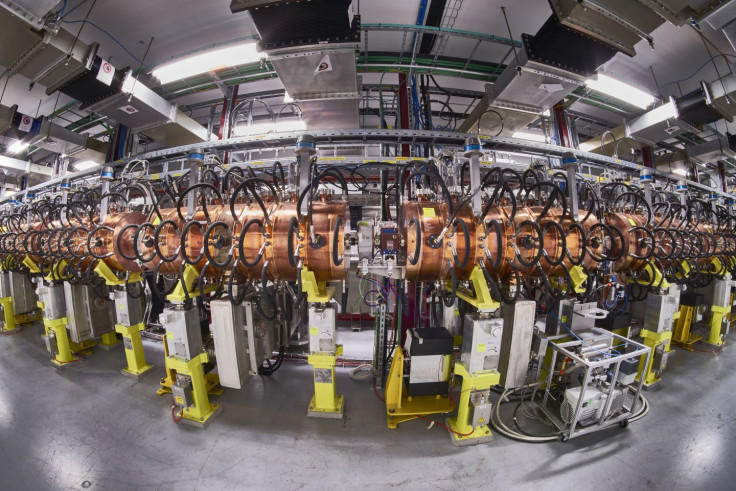CERN Inaugurates New Linear Accelerator That Will Eventually Double LHC Beam Intensity

In a bid to further crank up the luminosity — the number of collisions that occur in a given amount of time — of the Large Hadron Collider (LHC), the European Organization for Nuclear Research (CERN) inaugurated its newest accelerator Tuesday.
Once the Linear accelerator 4 (Linac 4) is connected to CERN’s accelerator complex sometime between 2019 and 2020, it will become the source of proton beams for a wide range of experiments at the LHC.
Linac 4 replaces Linac 2, which itself replaced Linac 1 — the only supplier of protons to CERN's synchrotrons until 1978. Linac 3, which started up in 1994, is still operational, and it produces lead ions for LHC experiments.
“We are delighted to celebrate this remarkable accomplishment. Linac 4 is a modern injector and the first key element of our ambitious upgrade programme, leading up to the High-Luminosity LHC,” CERN Director General said Fabiola Gianotti said in a statement.
“This high-luminosity phase will considerably increase the potential of the LHC experiments for discovering new physics and measuring the properties of the Higgs particle in more detail.”
Read: CERN Installs New Experiment To Study Antimatter
“New physics” is the term scientists use to describe a phenomenon that can’t be explained using the Standard Model — the framework that governs our understanding of three of the universe’s four known fundamental forces.
In 2012, with the discovery of the Higgs boson, which is responsible for imparting mass to all other particles, scientists believed the last missing piece that completed the Standard Model had been found. However, even the completed version of this theory fails to incorporate gravity and explain the origin and preponderance of dark matter and dark energy in the universe.
That led to scientists restarted the LHC in 2015 at an unprecedented energy of 6.5 teraelectronvolts (TeV) per beam — compared to 4 TeV per beam in 2012 — with the aim of either breaking the Standard Model, or bolstering it further.
They were also looking for the fabled “graviton” which is a force-carrying particle for gravity and evidence of supersymmetry — an extension of the Standard Model that predicts the existence of more massive “super partners” for every known particle.
So far, though, scientists have come away empty-handed. But this is where the new accelerator comes in.
The roughly 90-meter-long (295 feet) Linac 4 will be more than thrice as strong as the currently used Linac 2, which accelerates protons to energies of about 50 megaelectronvolts (MeV). This, in turn, would allow scientists at CERN to double the beam intensity to be delivered to the LHC.
More collisions means more debris, and more debris increases the odds of finding hitherto unknown particles that may reveal the much-sought after chinks in the armor of the Standard Model.
“Linac 4 will send negative hydrogen ions … to CERN’s Proton Synchrotron Booster (PSB), which further accelerates the negative ions and removes the electrons. Linac 4 will bring the beam up to 160 MeV energy, more than three times the energy of its predecessor,” CERN explained in the statement.
“The peak luminosity of the LHC is planned to be increased by a factor of five by 2025. This will make it possible for the experiments to accumulate about 10 times more data over the period 2025 to 2035 than before.”
© Copyright IBTimes 2024. All rights reserved.






















